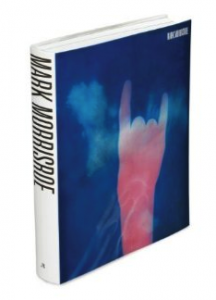 My friend the painter Dieter Hall turned me on to Mark Morrisroe, whose show is closing today at Artists Space. I was so touched my Morrisroe’s work – completed during a short 30 years of life, which AIDS ended in 1989 – after seeing it with Andre and Kyoko that I went back yesterday before the show closed. (This time, I was blessed to experience it with Lisa Masotta, Bruni Pabon, and Alex Goldmark, all of whom brought fascinating and different perspectives which enriched the vist.)
My friend the painter Dieter Hall turned me on to Mark Morrisroe, whose show is closing today at Artists Space. I was so touched my Morrisroe’s work – completed during a short 30 years of life, which AIDS ended in 1989 – after seeing it with Andre and Kyoko that I went back yesterday before the show closed. (This time, I was blessed to experience it with Lisa Masotta, Bruni Pabon, and Alex Goldmark, all of whom brought fascinating and different perspectives which enriched the vist.)
For me, Morrisroe’s work can be summed up in one image (which you can see here in the Times’ Style Magazine). It took me a while of gazing at the picture to ask, “Is that a bird?” on the guy’s hand. And then I noticed a cat. Then a second. Then, a third!
There was both absurdity and terror in that picture. Will the cats leap and kill the bird? Will the bird fly away and leave it all behind? How will the poor naked man fare between them — or is he bringing on this terror?
But that’s Morrisroe to me, as far as what draws me to him. At the edge of everything, there is this darkness looming. AIDS and death are at the periphery at all times, creeping in and clouding over everything. And yet, there is the delightful whimsy. The comedy cannot be suppressed because of the danger. The imminent danger itself – if not its consequences – becomes comical.
Morrisroe’s work touched me because both in its aesthetics and its subject matter, it captured the chiaroscuro – the light and the dark – of life in a way that makes sense to me. You have to look closely in some of his photographs to see the details, which emerge as if out of a fog. And then, once you notice those details – like Bruni seeing the hairs on an arm, or me seeing that bird and those cats – they seem obvious. These are the details that matter in life, which appear faintly like ghosts in the memory of death. And he finds them, but still lets the viewer have the pleasure of “finding” them, too. I love when artists guide you towards something you can reveal to yourself, rather than just beating you up with it.
And then you realize these details are bathed in light, but it’s a soft, gentle light, akin to that of a dim, dying lightbulb. And that was fate of Morrisroe, like too many dear, gentle, light filled souls we lost during those years (and still lose now). Just like the edges of his images, fading into an inevitable darkness, disease intrudes upon art, sickness attacks wellness, darkness and light battle it out. As they always have, from the writings of the Bible to the Bhagavad Gita, and in the works of the Italian Renaissance to the gay art scene of 1980s downtown Manhattan.
Too often, darkness wins out, and the only light we have to cling to is in the afterglow of the soul. Our memories of loved ones carry on their luminescence when disease takes them away. When we’re lucky, their light stays on through their work, as it did with Morrisroe (who had very little recognition in life but is probably earning a pretty petty for his Swiss gallery managers now).
But I felt very touched to have briefly glimpsed this young man’s perspective on the dark and the light, who toiled away in a New York art world which, as Alex and I discussed, simply doesn’t exist in anyway anymore. For better and worse, that life of being a broke, poor artist in Manhattan is simply over, as gone from this world as Morrisroe’s physical body.
But his disappearance doesn’t just have to be a victory of the dark over the light. There was a series of a dozen or so polaroid self portraits, showing Morrisroe, from left to right, going from a muscular chested young man with his life in front of him, to a sack of bones nearly poking through his AIDS ravaged skin with his life nearly over. Bruni and I accidentally looked at these from right to left, and I stopped myself from looking at them in the reverse when Bruni noted, “I prefer seeing it this way. I prefer seeing him turn back into the person he really was.”
